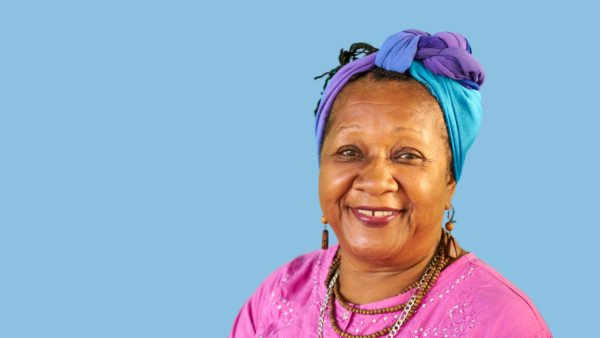In our work around strengths – helping people to find, share and develop their strengths – we’re often asked the question…do strengths change over time? So that question most often comes from the angle of: if I have something that really drains me and I’m not good at it, surely if I work hard enough at getting better at that thing, it can become a strength? Our answer to that is, most often, ‘not really, and what research shows is that if you spend more time developing, honing and building up your strengths, you’re more likely to get a better and bigger return, as long as you can ensure that the things that drain you don’t become really major risks for you.’ So that’s kind of case closed right? Well…not exactly.
I want to describe a couple of occasions where strengths do shift over time, both to become more prominent, or to play a lesser role.
I’m the strengths guy and my podcasts drop mainly on Mondays in time for you to get supercharged for your week ahead. But of course, you can listen to my back catalogue, which is growing all the time, any time you like. I focus on life, work and strengths-hacking tips that can help you be your best you each day. So let’s talk about changing strengths – do they change and if so, why?
So, what we know from our research and from our test registration certificate with the British Psychological Society, is that people’s strengths don’t really change very much over time.
If we define strengths as those qualities that energise you and which you are great at, or have the potential to become great at (and by the way, that is EXACTLY how we define strengths at Strengthscope), then people tend to report the same pattern of strengths (and drainers) month after month, year after year, decade after decade. How effectively we use our strengths CAN and does change over time – we would expect that and we do our best to help people make sure that that happens. But the underlying pattern remains very consistent over time…otherwise the British Psychological Society would tell us that we have an unreliable measurement tool, and they actually say the direct opposite.
However…we do see some changes in some people’s strengths profiles sometimes: these changes are rare but they do happen and I’d like to let you know what we’ve found out when we’ve explored this with them.
So first up, when someone completes Strengthscope, their profile – which contains 24 strengths in total – automatically generates their Top 7 strengths by rank order. These are the strengths that are most energising to them and which they are likely to get most value and enjoyment from if they gear their working lives and life lives around them. But sitting just below that top group of strengths are what we call ‘bubbling under’ strengths – those that on a different day, may have made it into that top group. We encourage people to explore these bubbling unders as well as their Top 7, because they absolutely have energy for them, just not quite as much as for the highest ranked group. So actually for most people, I said that the pattern of what energises you doesn’t change much if at all, but sometimes people’s bubbling unders can become much more prominent, so more energising and more useful and valuable to them.

Which really is the first point of strengths change, which relates to when people haven’t had, or aren’t getting, enough of an opportunity to use certain strengths…or when they are suppressing their own strengths perhaps because they don’t feel that those particular strength are valued or even accepted where they work. I have an example from one of our clients where several people who we were running a workshop with said that they felt their Compassion (which was in their profiles as a bubbling under strength) didn’t really have a place at work – they said they definitely used Compassion with friends and family just not at work, where more Execution style, getting it done, strengths they felt were more valued. When we talked about this in more depth, there was an acknowledgement that actually, feeling cared for and looked after was very much needed and valued and lacking in their work teams and so their Compassion could have a really important role to play every day at work. And so in these cases, what had been suppressed for some time as a strength, now had a role and it didn’t take long for these strengths to become more prominent in these people’s profiles.
The second example I have of strengths changing, by becoming more prominent, is when people haven’t had enough opportunity to use those strengths so they’ve remained untested or underused. So an example might be Leading – which could be a major source of energy for you – but perhaps you haven’t been in a managerial or leadership role much or at all. Or maybe you’ve just not thought about using that Leading strength in a more creative way so that you can bring it into other areas like projects or cross-functional tasks that you’re involved in rather than thinking of it solely as being for the line management of others.
Another example may be where you’ve had an early negative experience at work using a strength and that’s taught you to keep it under wraps or dialled right down so you don’t get the same negative result again. Using Courage as an example, this might have led you to a place where you said something you regret to a senior person who you felt needed to hear it at the time, but you later realise probably wasn’t the right context to do it in. In both of these cases, recognising and acknowledging a strength gives it a chance to breathe and develop and have value and that can lead to it becoming more visible in your profile, because you’re working on it and that gives the strength more energy, which leads to more positive output on your profile when you retake the assessment.
The last example I have is of when a strength can fall away from the Top 7 group, or even lower. And while this is rare, it sometimes relates to a strength in overdrive – when a strength is overused, repeatedly, because it’s a source of energy and up to a point has been of value, but that overuse has led the person to a point where they’ve just moved away from it completely because they’ve pulled too hard on it for too long and it may have started to drain their energy, even in some cases to the point of burnout.
 This can happen with any strength but Resilience is an obvious candidate – where someone over and over again is taking on a challenge as a way of getting motivated and energised at work – the challenges can become greater but the person just recalibrates and looks for another, bigger badder challenge, in order to stay motivated. In the end, this can lead to taking on challenges that are too great or too many and as a result, a bad thing occurs and they move away from this strength as they stop trusting it as a tool for good. So following on from role, or career, or organisational transition, sometimes we see people’s strength profile change shape a little as they move away from strengths that led to that transition (or which they feel they overcooked) and more towards alternative strengths and strategies. In the end, these strengths can bounce back but as a result, you can see a strength temporarily becoming less prominent in a profile.
This can happen with any strength but Resilience is an obvious candidate – where someone over and over again is taking on a challenge as a way of getting motivated and energised at work – the challenges can become greater but the person just recalibrates and looks for another, bigger badder challenge, in order to stay motivated. In the end, this can lead to taking on challenges that are too great or too many and as a result, a bad thing occurs and they move away from this strength as they stop trusting it as a tool for good. So following on from role, or career, or organisational transition, sometimes we see people’s strength profile change shape a little as they move away from strengths that led to that transition (or which they feel they overcooked) and more towards alternative strengths and strategies. In the end, these strengths can bounce back but as a result, you can see a strength temporarily becoming less prominent in a profile.
So do strengths change? Well, we are energised by what we are energised by and that is very stable over time (at least when measured by Strengthscope) – but attitude, opportunity and overuse can all have a role to play in shifting someone’s profile a little or a lot depending on the circumstance.
Hope that’s been useful – till next time – enjoy your strengths journey.
This podcast is also available at Soundcloud, Spotify, Acast. Go and subscribe!












